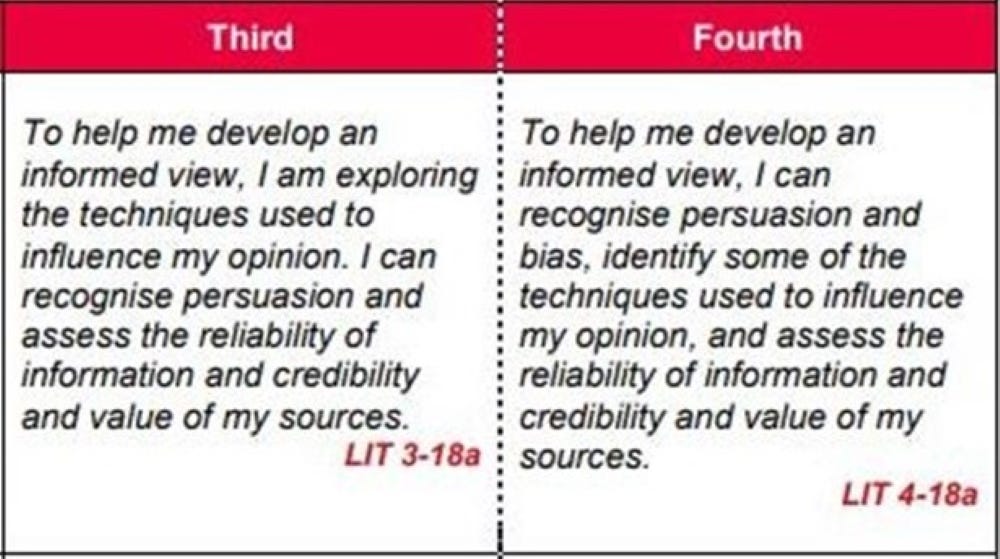Scottish Union for Education – Newsletter No44
Newsletter Theme: literature and history – an assault on the past.
English literature lessons are a central part of secondary school life and life in general. Whether you loved or hated them, they were an important part of growing up. Many parents and grandparents can still recite poems that they learned at school; there is often a joy in sharing that experience with your own or other people’s children. However, increasingly the Scottish curriculum overlooks poems with strong and longstanding appeal in favour of poetry that is considered more ‘relevant’ or contemporary. Where schools are teaching classic or traditional poetry, they are often failing to understand the context in which it was produced. Rather than helping students to understand the differences between the present and the history, they generate confusion which might be described as an assault on the past. Julie Sandilands, concerned about some of the material provided on the teaching of poetry in Scotland, contacted Professor Lawrence Goldman from St Peter’s College, Oxford to see what he made of Time for Inclusive Education’s teaching material.
When the teaching of ideology becomes ‘an assault on our past’
Julie Sandilands is an English and business teacher who worked in several secondary schools in Fife until 2017. Now based in Cumbria, she works as a private tutor teaching children both in and out of mainstream provision.
The declining standards in Scottish education are regularly reported across a range of publications. Be it the Curriculum for Excellence, the latest PISA scores, or lamenting the loss of a world-class system, there seems to be no end to the bad news express train. To add to these woes, the Scottish government’s enthusiasm for ensuring that ‘LGBTI-inclusive’ education is embedded within the curriculum has opened the door for third-party activist organisations such as Time for Inclusive Education (TIE) to influence what is taught in Scottish schools, and how. An exposé on TIE by SUE can be found here, and as one article points out:
Teaching resources, whether created in-house or by external organisations, need to be of the highest standard and go through a rigorous quality assurance procedure before they are used in the classroom. Poorly written resources, rather than facilitate progress, create a barrier to learning.
One such teaching resource, provided by TIE, is the Interpretation of Poem 49, aimed at third- or fourth-level English and Literacy. My main concern with the PowerPoint presentation and the accompanying teaching plan is the link they have made, without any substantial evidence, with the Scottish Witch Trials and persecution of homosexuals in early modern Scotland, and how this link might influence students’ already limited understanding of the events of that time. In need of a more expert analysis, I sent the materials to History Reclaimed, an independent group of scholars. Below is the response from Professor Lawrence Goldman.
8/11/2023
Dear Julie,
Please excuse the long delay in replying to your inquiry about ‘Poem 49’, attributed to Marie Maitland. Looking through the copious lesson plan provided for teachers, I imagine it is this portion that troubles you. There is an elision between homosexuality and witchcraft:
‘The persecution of homosexuality did not only exist in Scotland and England – there are examples of historic records from the same time period across Europe, including in Spain and France where men and women were strangled, flogged, and burned for their sexuality. Can pupils tell you what this type of prejudice and hostility would be described as today? We could describe this as homophobia: which is defined as the dislike, irrational fear, and hatred of people who are gay or lesbian, or are perceived to be by others. Throughout history, homophobia has manifested in different ways: from legal restrictions on the rights of gay and lesbian people, to discrimination, violence, and the murder and execution of people known or thought to be gay or lesbian. During this same time period, witch-hunts and trials of people accused of witchcraft were occurring in Scotland, and in many places across Europe – particularly Germany, Sweden, and Austria among others. In Scotland particularly, many women who did not conform to the Church and wider society’s expectations of what a ‘mother’ and a ‘wife’ should be, were prosecuted as witches. In addition, anyone who dressed in clothes or garments considered not to be of their own gender were viewed as ‘anti-social’ and often prosecuted and punished. The Reformation Church had strict moral values, and the citizens of Scotland lived in a superstitious society, where belief in magic, evil, and ‘natural’ or ‘unnatural’ forces was common. It is within this context that sexuality and gender was heavily policed and controlled by the State and the Church.’
I see your point. Looking at this and all the other information provided for teachers, it is clear that the curriculum authority is throwing everything at this poem and straying across all sorts of boundaries that historians and literary scholars should respect. They invite the students to see the poem and its context through contemporary eyes and ideas. They fail (I think) to make the point that poetic professions of homosexual love were common in this era (one thinks of Shakespeare’s sonnets, for example). They also present a picture of severe distinctions between the genders when, as we know, at least in England and in Shakespeare, there are many examples of cross-dressing, women impersonating men, and very many dominant female roles. In other words, the notes provided paint a stereotypical and distorted picture of the literary culture of the age, which, in matters of sexuality was much more playful and experimental.
You are right to question the references to witchcraft. It is one thing to emphasise the proscription of lesbianism, but what, exactly, is the relationship of this to witchcraft? There is a vast literature on witchcraft in this era, and as historians have shown, the reasons for branding a woman a witch are many and complex, especially in periods of religious turmoil such as the sixteenth century in Scotland. Class, age, occupation, physical appearance, and personal spite, as well as sexuality, may all have led to the claim that someone was a witch. My old English teacher would say that Poem 49 is being overwhelmed with extraneous detail and context, much of it quite beside the point of the words actually on the page (which tell a clear and charming story). This is about a love that cannot speak its name, not the social history of Scotland.
I cannot end without referring to the section below which caught my eye among all the verbiage. The poem, in its many different examples of devotion (some heterosexual, some homosexual, some without any sexual elements at all) refers to Ruth and Naomi from The Book of Ruth. The gloss on this is as follows:
Ruth, Nohemi (Naomi): Old Testament, devoted female–female relationship, romantic homoerotic associations. (See The Book of Ruth 1:16-17 (1560 Geneva Bible):
‘And Ruth answered, Intreat me not to leaue thee, nor to departe from thee; for whither thou goest, I wil goe: and where thou dwellest, I wil dwell: thy people shalbe my people, and thy God my God. Where thou dyest, wil I dye, and there wil I be buryed. The Lord do so to me & more also, if oght but death departe thee & me")
Wait a minute! Naomi is Ruth’s mother-in-law!!! There is nothing homoerotic about it! Both women have lost their husbands, but Ruth’s fealty to the family of her spouse and to his people – the Jews – determines that she chooses to stay with Naomi. Have they read the Book of Ruth? Do they know the story? This, too, is grounds for complaint.
I think they are labouring to crack a nut. Of course, there is a point to be made about the historic difficulty of homosexual relationships, a point that could be made in all literature and history up to the present generation. But the notes provided become an assault on the past in all its complexity, and what we should be doing, in schools and colleges, is helping students to appreciate the differences between now and then.
Professor Lawrence Goldman
St Peter’s College, Oxford
While teachers are often content to use external resources, as subject specialists the responsibility to ensure accuracy and appropriateness is on them. Failure to do so is unacceptable, and students following the Scottish system deserve better – much better. But all is not wasted, and I do have a suggestion for English teachers: the Interpretation of Poem 49 is an excellent resource to allow students to achieve the following Curriculum for Excellence reading experiences and outcomes!
Society needs new institutions.
Help us to make SUE one of them.
Across the board we find that organisations that were set up in the past are no longer fit for purpose. We see this in education, in universities and schools, also with lecturers' and teachers' unions, and even with groups who are supposed to represent parents. Somehow, they all sing from the same hymn sheet. The problem is I don’t hear much singing about the very thing that these institutions and groups are meant to be all about – Education.
In 2024 SUE hopes to employ three members of staff to promote our work, build our base of supporters, and develop our online presence. To do this we need your financial help.
Whatever you can afford, we appreciate your support. So, please consider making us an institution that can represent people in Scotland who understand and demand that schools and universities become places of excellence – places of Education not Indoctrination.
Thank you.
Stuart Waiton, chairperson of the Scottish Union for Education
Thanks for reading the SUE Newsletter.
Please visit our Substack
Please join the union and get in touch with our organisers.
Email us at info@scottishunionforeducation.co.uk
Contact SUEs Parents and Supporters Group at PSG@scottishunionforeducation.co.uk
Please pass this newsletter on to your friends, family and workmates.





